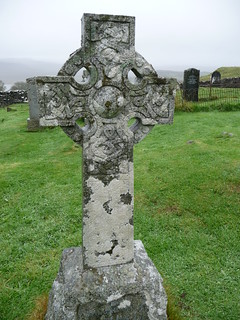SCOTTISH ENERGYSome years ago a number of Scottish Americans were delighted when the Scottish Power Pipe Band came to the US, regarding it as an “ethnic pride” band, not realizing it had to do with the electrical company! During the early heyday of the SNP the phrase “It’s Scottish Oil” was commonly heard about North Sea Oil. Given the stress on energy sources and discussions about renewable energy it is not surprising that energy is a major issue in most political campaigns at this point. Renewable energy as opposed to fossil fuels which will ultimately be used up is a major concern. The major sources of these are solar, wind and tide which allow the generating of power from sources which continue to happen no matter how much we may use them. However nothing is without consequence and so there have been battles still about the generating of energy from many areas. Scotland has an abundance of most of these renewable energy sources. While it is true that solar power is less significant in Scotland than other places with more abundant sunlight, summer days in Scotland are quite long (although the daylight in the winter is short lived) and there are many cloudy days in which there is reduced light. None the less, even on cloudy days, solar power can still heat water and is functional. Wind power is a major feature in the production of energy and the huge windmills found singly or in clusters called “wind farms” are a growing feature of the Scottish landscape. It is the fastest growing source of renewable energy in the country with over 2500 megawatts installed more than 2 years ago. The Robin Wigg Wind Farm was Scotland’s first off shore wind farm, located on a sandbank in the Solway Firth on the west coast of Britain (part of the Irish Sea) Although nearly three quarters of the Scots queried felt the wind farms were necessary There have been some voices against the wind farms – largely in terms of where they are placed and their size - arguing that they are a “blight on the landscape” or that the wind farms work best in small areas and should not be the large scale ones currently found in many places. Many of the areas which have the wind farms say that they do not see this as a problem. The turbines are impressive looking and have a calming effect on people. Fears about the noise they might produce have vanished when locals found them totally quiet. Other concerns have been raised about environmental concerns. While no one disagrees that the turbines produce no “greenhouse gases” there are concerns about those built on peat bogs where some gases might be released. There is also a question about the greenhouse gases created in transporting the turbines to their sites. There are also questions about what will happen as the various turbines are “decommissioned” and left in place. Additionally reports that some migratory birds have been struck by the blades and killed have surfaced. Fears that the beauty of the landscape would be diminished and result in a loss of tourism seem unfounded. Many tourists to areas where there are wind farms reported they did not see them as marring the landscape aesthetically and that in some cases the wind farms drew them to the area in the first place. Tidal power has also become an interest to Scots and recently plans were approved for the installation of 6 huge underwater turbines. These turbines will be placed in the Pentland Firth which separates Orkney from Caithness. These turbines which look like propellers will be turned by some of the fast moving waters off the coast. Applauded by environmentalists, this “test”, if successful will ultimate lead to the installation of many such turbines in the area. Another project is planned in the Sound of Islay off the west coast. The only questions raised have been about the cost and the necessity of building a large grid to carry the power to other parts of Britain. So whether it is North Sea oil, or wind power, solar power or tidal power, energy is likely to be an important aspect of Scotland’s economic and political future. Despite the country’s small size and population, its resources in this area are significant. Maybe the slogan “Its Scottish Oil” will be replaced by “Power to the people”!?
The Industrial Highlands - PamphletThe pamphlet "The Industrial Highlands" was written by Douglas Shaw in 1967 with illustrations by M.E. Pullar Thompson. It was printed by Caithness Books, 1 Bank Street Thurso, Caithness and was published by An Comunn Gàidhealach with whose kind permission we publish it here. This pamphlet is about the coalmine at Brora, Sutherland. These pamphlets have been scanned and therefore are large image files. Click each link to read one page at a time Gravestones in Scotlandcecilia I love old cemeteries. Not just as Art but as history of culture and design. There's some mighty OLD ones in Europe. So, this being October and Halloween season I came across a few links to pictures of gravestones to share. This blog has really beautiful images for the Tour Scotland Photographs Skull and Crossbones Gravestones Greyfriars Perth Perthshire Flickr has a Scottish Gravestone Group. Below is a couple of examples of the pictures you can peruse though. There's some spectacular images in the Flickr Hive Mind search engine. Feel free to trip the light fantastic over the Gravestones...be careful of the spooks! |



